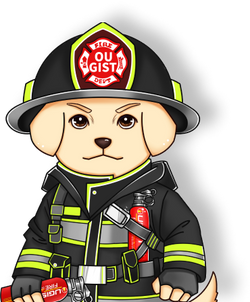When it comes to fire safety, selecting the right type of fire extinguisher is crucial.Fire extinguishers are classified as types A, ABC, BC or K. It is important to use the right type of extinguisher on the specific class of fire to avoid personal injury or damage to property. The wrong type of extinguisher could cause electrical shock, explosion, or spread the fire.
Now let us first learn about Class A fire extinguishers.

Class A Fire Extinguishers
What are Class A Fire Extinguishers?
Class A extinguishers put out fires in ordinary combustible materials such as cloth, wood, rubber, paper, and many plastics.These materials can catch fire easily and burn quickly, making it essential to have the right extinguisher on hand.
Types of Class A Fire Extinguishers:
-
Water Fire Extinguishers: These are the most common type of Class A extinguisher. They work by cooling the burning material below its ignition point, effectively putting out the fire.
- Advantages: Simple to use, widely available, and effective against most ordinary combustibles.
- Disadvantages: Should not be used on electrical fires or flammable liquid fires due to the risk of electrical shock or spreading the fire.
-
Foam Extinguishers: These extinguishers work by smothering the fire and creating a barrier between the fuel and the oxygen.
- Advantages: Can be used on Class A and B fires, providing versatility in case of mixed fuel sources.
- Disadvantages: Not suitable for electrical fires.
-
Dry Chemical Extinguishers: These are multipurpose extinguishers labeled as ABC, meaning they can be used on Class A, B, and C fires.
- Advantages: Versatile and effective on different types of fires.
- Disadvantages: The powder can be messy and may cause damage to sensitive equipment.
Choosing the Right Class A Fire Extinguisher: When selecting a fire extinguisher for Class A fires, consider the environment and potential fire hazards. For example:
- Homes and Offices: A water-based or ABC dry chemical extinguisher is usually sufficient.
- Workshops or Factories: Foam extinguishers might be more suitable due to the presence of mixed fire risks.
Recommendations
Here are three of the most popular Class A fire extinguishers available on the US market:
1. Kidde Multi-Purpose Fire Extinguisher
- Model: Kidde FA110
-
Features:
- Multi-purpose ABC extinguisher suitable for Class A, B, and C fires.
- Lightweight and easy to use.
- 4-pound extinguishing agent, ideal for homes and small offices.
- Includes a pressure gauge for easy pressure checks.
2. First Alert Standard Home Fire Extinguisher
- Model: First Alert HOME1
-
Features:
- Designed for home use, suitable for Class A, B, and C fires.
- 4-pound extinguishing agent, lightweight and user-friendly.
- Corrosion-resistant metal canister and rechargeable pressure gauge ensure long-term reliability.
- Comes with a simple-to-install mounting bracket.

3. Ougist water-based Fire Extinguisher
- Model: Ougist MSWJ620
-
Features:
- Multi-purpose ABCK extinguisher, suitable for Class A, B, Cand K fires.
- Concentrated Water-based Fire Extinguisher:Maximum spray distance 13 feet, Suitable for Extinguishing Solid Material Fires, Combustible Liquid Fires, Electrically Charged Material Fires, Cooking Oil Fires.
-
Ougist fire extinguishers is a water-based fire extinguisher,,This fire extinguisher is resistant to reignition. It's perfect for putting out Class A fires.It's one of the most useful fire extinguisher class a fire
- Includes a wall bracket for easy storage and use.
Safety Tips
- Suitable Environment: Consider the environment and potential fire hazards when choosing an extinguisher. For homes and small offices, lightweight models like the Ougist MSWJ620 Kidde FA110 and First Alert HOME1 are sufficient.
- Regular Checks: Ensure regular checks of the pressure gauge and perform necessary maintenance. The extinguishing agent should be within its effective period to ensure functionality.
- Operation Training: Ensure all household members or office personnel know how to use the extinguisher and are familiar with the PASS method (Pull the pin, Aim at the base of the fire, Squeeze the handle, and Sweep from side to side).


